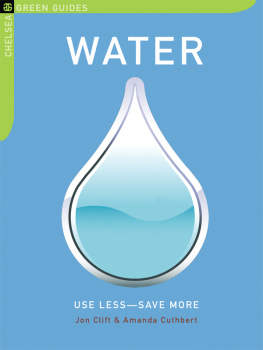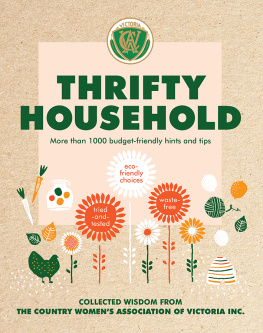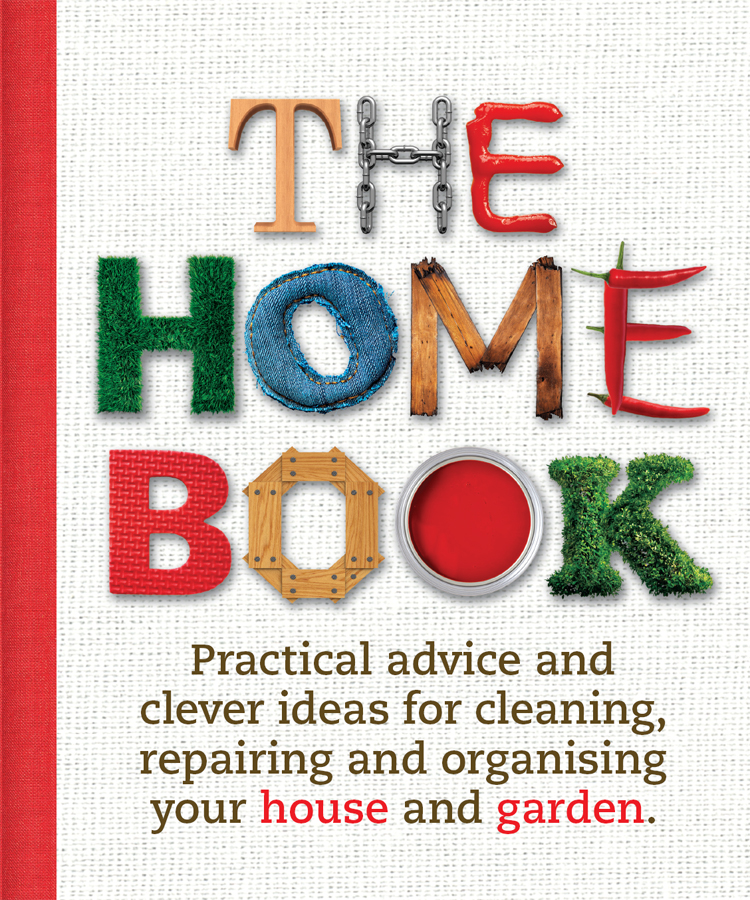Saving energy makes sense
Many of the principles of an ecologically sound house also make economical sense. Building a house from scratch allows you to situate, orient and shelter the building to make the best of renewable sources of energy. Ideally, living spaces should face north in the southern hemisphere (and south in the northern hemisphere) to take greatest advantage of the sun for light and warmth in both summer and winter, so an energy-efficient house should also be a naturally comfortable one. If you are renovating or extending an existing house, consult an environmental architect to discuss your options for a low-energy design.
THE ENVIRONMENTALLY FRIENDLY GARDEN
Efforts to reduce your homes impact on the environment are particularly rewarding in the garden. There are many ways to reduce the amount of water you use, and kitchen scraps and other biodegradable household waste can be composted and returned to your soil. With a little extra care and observation you can grow an abundant, healthy garden without relying on pesticides and herbicides.
A carefully planned garden is an enticing haven for its inhabitants as well as environmentally friendly.
Shrubs around the house will have a cooling effect on your home, as plants dont absorb and retain heat as much as concrete.
Trees provide shade, act as a windbreak and filter noise and air.
Deciduous trees near north-facing windows in the southern hemisphere, and south-facing windows in the northern hemisphere, allow the maximum amount of sun in winter when the branches are bare; in summer they provide shade.
Pergolas and trellises covered in trailing deciduous vines provide shade in summer while allowing light through in winter.
A hedge of native shrubs between the house and road absorb noise and pollution as well as attract native birds to the garden.
A compost heap and a worm farm recycle biodegradable household waste and garden clippings into a natural fertiliser and mulch that can be put back into the garden.
Mulch used on garden beds maximises water retention and suppresses weeds.
A rainwater tank augments the local water supply.
Grey water is channelled onto the lawn rather than wasted.
A fixed watering system delivers water directly to where it is needed without wasteful run-off.
A small kitchen garden provides an abundant supply of fresh herbs, citrus and salad vegetables.
Companion planting helps deter pests, avoiding the potentially harmful use of chemicals.

In a hot climate
Paint the exterior of your house with light-coloured paint to help reflect unwanted radiant heat.
Saving water and energy
Conserving water not only takes the strain off your local supplier but also reduces pollution, as processing water requires energy, which in turn creates pollution. Saving water can also save you money as, increasingly, local suppliers are charging for the amount of water a household uses.
Solar energy
Install a solar or energy-efficient hot water heater. Since water heating accounts for up to 50 per cent of a homes energy use, installing a solar heater saves in energy bills as well as pollution.
Sun-powered electricity, harnessed by solar panels on the roof, can run all your houses appliances as well as heat water for the bathroom and kitchen. In a solar hot water heater, the sun directly heats up water in small pipes, which is stored in a tank for later use, usually in conjunction with a gas or electrical heater to boost the temperature of the water. Photovoltaic cells on the roof convert the suns energy to electricity, which can be diverted to the fridge, sound system and washing machine. In some systems, surplus electricity is sent to the main electricity grid.
BATHROOM
The bathroom is the scene of many a water wastage crime taps left on, long showers, deep baths, litres or gallons of water on its way to the sewage treatment plant every time you flush the toilet. Whether you think this matters or not may depend on the source of your water when it just keeps on coming out of the tap, you may not give it a second thought until the water bill arrives, but when you rely on a rainwater tank, for instance, the inconvenience of running out may motivate you to be more careful about your water usage.
Water-efficient showers
The shower is the largest user of household hot water and accounts for roughly 20 per cent of the greenhouse pollution in the average home, but there are ways to cut your water consumption.
Fit a low-flow shower rose. These use 712 litres (12 gallons) a minute of water, compared with up to 20 litres (4 gallons) a minute with a standard shower rose. Alternatively, fit your current shower rose with a flow restriction disc (a plastic insert).
Take shorter showers. Cutting your shower time from 10 minutes to 5 could save as much as 27,000 litres (5939 gallons) of water a year. And if you cut down from a 5 minute daily shower to a 3 minute one, you could save as much as 40 litres (8 gallons) of water per shower.
TOILET TRICKS
Up to one-third of water used in the home is flushed down the toilet cisterns commonly contain 311 litres (2 gallons) of water.
Save water by fitting a dual flush to your toilet cistern. New models use 6 litres (11/3 gallons) for a full flush, and 3 litres ( gallon) for a half flush.
For a single-flush toilet, reduce the flushing volume by placing an old juice container full of water, or even a brick, in the cistern.

Turn it off
To save water, dont leave the tap running while you brush your teeth turn it on and off as needed.
Improve your ventilation
There are several measures you can take to improve the ventilation in your home.
Fit extractors, also called exhaust fans, in the bathroom and kitchen. Exhaust fans need to be discharged to the outside air and not to an enclosed garage, where they can cause condensation, mould and rot. They are useful in wet rooms such as bathrooms as well as in garages and workshops, where they can remove fumes.
Install an overrun timer on the extractor fan in very steamy bathrooms.
Fit air grilles, also known as trickle ventilators, into the window frames of living rooms and bedrooms.
Maintain air-conditioning systems, especially filters.
LAUNDRY
Washing clothes and household linen in mainly cold water reduces both heating costs and energy consumption.
Pre-soaking heavily soiled or stained garments minimises the need to use hot water and harsh chemicals.
Full loads or half-load settings waste less water and detergent, and the fast spin setting reduces the drying time.
Using concentrated detergents reduces the amount of chemicals released into the environment, and the correct dosage cuts out waste. Non-biological powder can be used if a household member has sensitive skin.
Peg out the washing rather than using your dryer the sun and wind are free.
Using a range of natural stain removers keeps clothes looking good and cuts down on dry-cleaning costs.












